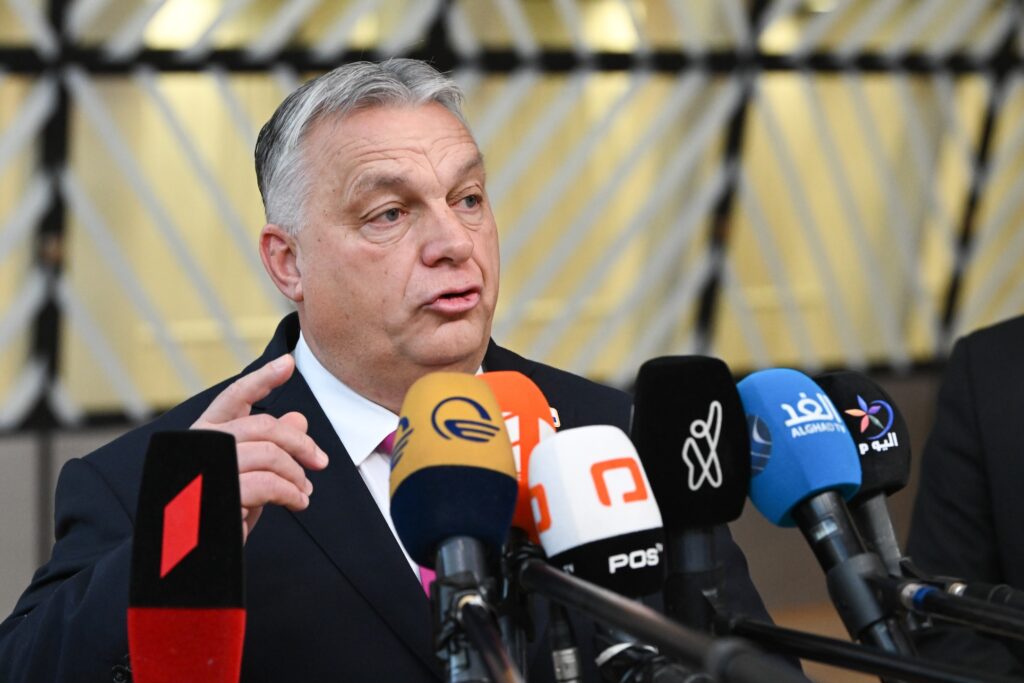It’s not been a good few days for Hungarian Prime Minister Viktor Orbán. On February 10, the country’s president, Katalin Novák—a close Orbán ally—was forced to resign over her decision to pardon a man convicted of helping cover up a sex abuse case at a children’s home.
Novák—a former family minister who had carefully crafted an image as a defender of traditional family values—apologised for granting the pardon and said she made “a mistake”.
At the same time, Judit Varga, the former minister of justice who approved the pardon and who was the lead candidate of Orbán’s ruling Fidesz party in June’s elections for the European Parliament, was also forced to resign.
Now, the Hungarian government faces new accusations of interference with media freedom and pluralism, part of what has been called a systematic attack on the rule of law that obstructs the work of independent journalists in holding the authorities to account and prevents the public from accessing information.
A new report from Human Rights Watch, I Can’t Do My Job as a Journalist: The Systematic Undermining of Media Freedom in Hungary, documents the increased obstacles and constraints independent journalists and media face under Orbán’s government.
“The clear objective of hollowing out media freedom is to prevent the public from knowing what the government is doing or holding it to account,” says Hugh Williamson, Europe and Central Asia director at Human Rights Watch.
“The European Union needs to recognise the attack on media as part of the Hungarian government’s erosion of the rule of law, and take action to address it, including by moving the Article 7 process forward urgently.”
Hungary has been under the first phase of Article 7—often referred to as the EU’s ‘nuclear option’, a legal tool which allows the sanctioning of member states in serious breach of EU values—since 2018 over the democratic backsliding overseen Orbán, who is accused of weakening judicial independence, perpetuating cronyism, abusing emergency powers, passing anti-LGBT legislation, hindering asylum rights and diluting media pluralism.
In January, however, Didier Reynders, the European Commissioner for Justice, said that Article 7 could not be fully implemented against Hungary until there is a strong majority in favour among member states.
“It’s not possible for the Commission to take a decision in the process at the present time,” he said.
However, with Hungary set to take over the rotating presidency of the European Council in July, Human Rights Watch believes that its new report makes it pivotal for the EU to act immediately to arrest the democratic backsliding.
“EU institutions should push the Article 7 process forward and use their legal enforcement powers to protect independent media and freedom of information currently under attack as a consequence of Hungary’s dismantling of the rule of law,” Williamson says. “Independent journalism is a cornerstone of democracy and crucial for holding governments to account for power abuses.”
Media monopoly
In its report, Human Rights Watch claims that since 2010, the government has used its power to deliberately dismantle media freedom and pluralism through control over the media regulatory body, which has allowed pro-government outlets to dominate, by exerting direct political control over the public service broadcaster, and financially rewarding pro-government outlets.
Independent and investigative journalists face major obstacles in their work, including surveillance, threats, limited or no access to decision makers and public information and smear campaigns against them in pro-government media.
The Reporters Without Borders 2023 World Press Freedom report ranked Hungary 72 out of 180 countries.
Human Rights Watch interviewed representatives of media organisations, journalists and editors, and a media owner who have experienced the harmful effects of the clampdown. The attacks on the free press take place against the backdrop of the government’s persistent undermining of rule of law, its hijacking of public institutions, and its silencing of civil society groups and critical voices.
While the government did not respond to comments on findings, the main regulator, the Media Authority, in a December letter responded that the body is independent with a nomination process set out in domestic law, and that the public service broadcaster should provide public service media and news service programs and protect the independence of such programmes.
Human Rights Watch found that the government is using its near media monopoly to strengthen its hold on democratic institutions. This distortion of the media landscape obstructs the work of independent and investigative journalists and prevents the Hungarian public from accessing reliable and factual information to make informed political choices.
Talking heads
Fidesz, Human Rights Watch claims, started to seize control of the media soon after it was elected in 2010. It used its two-thirds majority in parliament to overhaul the media law, and packed the Media Authority, the media regulator, and its and Media Council with Fidesz loyalists.
The government fired over 1,600 journalists and media workers at the public service broadcaster (MTVA), replacing them with government talking heads, effectively turning MTVA into a government-controlled broadcaster. Current and former MTVA employees told Human Rights Watch that reporters are told by their editors what and how to report, and which terms to use and to avoid, and if they do not like it, that they can pack and leave.
The government’s systematic clampdown on independent media intensified with the 2018 creation of the Central European Press And Media Foundation when media owners close to the Orbán government transferred approximately 500 media outlets to the foundation. The government bypassed national competition rules when Orban signed an order stating that the donations of the outlets were a matter of “national strategic importance in the public interest”.
Independent journalists say that they have virtually no access to public data from state institutions or government officials and Fidesz politicians. Independent journalists and outlets are restricted, sometimes banned, from attending government news conferences.
Pegasus spyware surveillance has been used against some independent journalists and outlets and others regularly face smear campaigns by pro-government outlets, creating a climate of fear and intimidation.
Independent media outlets have closed, or changed ownership and turned pro-government overnight, including the web-based outlets Origo and Index, further limiting the public from accessing independent and factual information.
Photo: Viktor Orbán at a meeting of the European Council. © European Union







